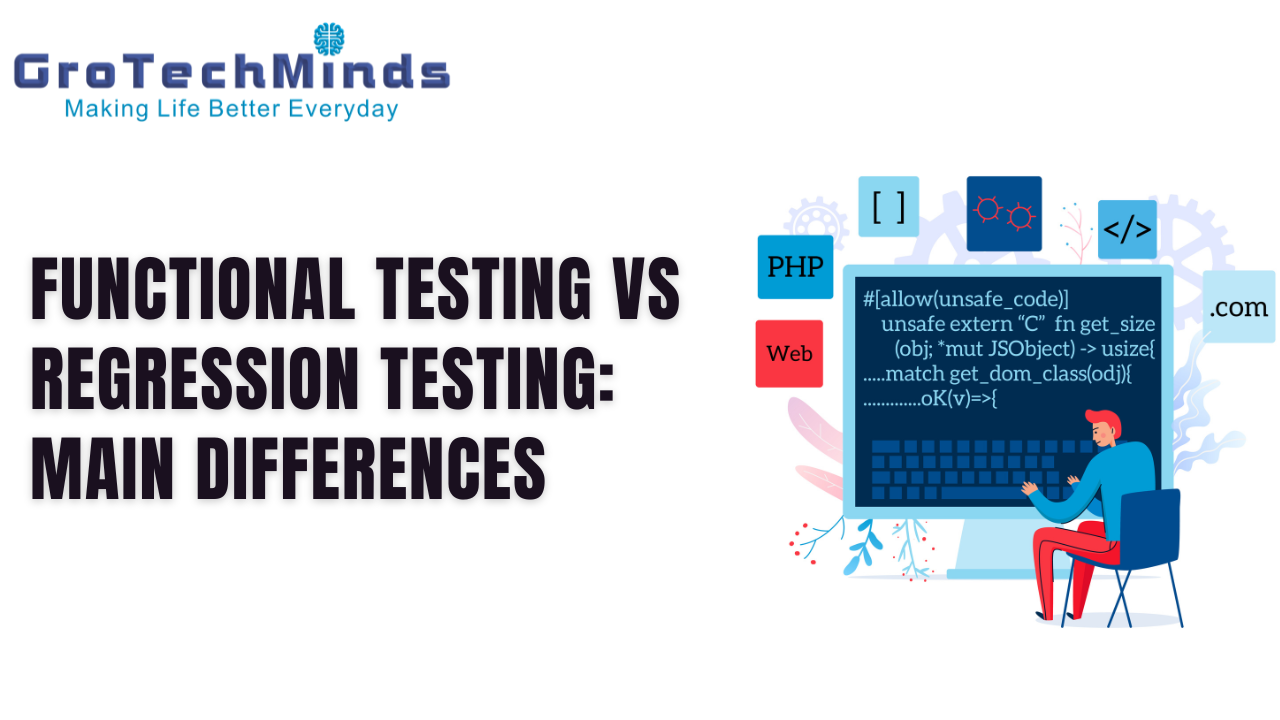
What is Functional Testing?
One kind of software testing procedure called functional testing makes sure that every element of a program or piece of software produces the intended results. To put it simply, it’s similar to verifying that television turns on and off, displays sounds and performs other functions as intended.
Here, every software feature is examined to ensure that it functions as intended. This entails communicating with databases, APIs, security features, and user interfaces.
The application or system code’s structure is not taken into account during functional testing. Outer behavior and user experience are the main points of emphasis.
Important Elements in Functional Testing
In software testing, the functional testing stage is essential for verifying that the system or application’s components are operating as intended. The essential elements of functional testing are as follows:
Understanding needs: It’s important to be aware of the software or application requirements before beginning functional testing.
You wish to test an e-commerce application, for example. Effective user authentication and product search with filters or sort choices to streamline the procedures of finding results are possible examples of needs. Put simply, understand what the software is meant to accomplish.
Test scenarios and cases: Write test cases that cover every aspect of your system’s needs. Provide a detailed, step-by-step instruction guide on how to conduct the tests in this situation.
Assemble test data: To ensure full success, functional testing needs a variety of test data. To see if the software handles both circumstances as planned, choose valid and invalid data sets for the test.
You can try both valid and invalid usernames and passwords for “User Login” to see how the application behaves.
Test environment: Configure the testing environment to be identical to the one used in production. This guarantees that the software will operate as intended in a variety of contexts and configurations.
Test documentation: To make sure that all testing objectives and goals are completed, it’s critical to monitor the functional testing process as it moves along. The testing procedure, test reports, test plans, and test reports must all be included in the document.
What is Regression Testing?
In software development, regression testing is a crucial procedure that makes sure that updates or modifications to the code don’t generate new issues that could have an impact on the product. Its main responsibility is to guarantee the system’s stability and dependability throughout the software development and production life cycles.
Regression testing also makes sure that the original functionalities continue to function as intended by sequentially running a set of pre-existing test cases. The developers are prompted to make the required modifications or fixes if any mistakes are found.
Essential Elements of Regression Analysis
In order to guarantee that all functionalities continue to function as intended even after code changes are made, regression testing is a necessary step in the software development lifecycle. Regression testing’s essential elements include:
Test selection criterion: Choosing a single test case requires criteria because regression testing takes a lot of effort. To put it another way, rank the portions of the code or frequently used features that are more likely to be impacted by modifications.
Think about an app for banking. You anticipate doing business frequently. Test selection criteria might prioritize transaction-related tests over features that aren’t used as much.
Automation tools: For executing test cases and comparing outcomes, automated regression testing tools like Cypress and Selenium automation testing are essential.
Test environment management: In this scenario, DevOps techniques like configuration environments are relevant. To prevent regressions peculiar to a particular environment, you should keep the test environments the same throughout the development phase.
Version control system: When it comes to bug fixes and code modifications, version control systems such as Git or SVN facilitate tracking down the author and date of the change. In order to identify regression impacts during regression testing, this is crucial for developers.
Test suite: The test suite includes test cases for various functional components of the program. When new issues arise due to code modifications, these test cases serve as a reference. Both Automation testing with selenium and manual tests in the test suite should contain accurate data.
Now let’s begin to examine the distinctions and parallels between Functional and Regression Testing using the straightforward table below:
| Aspect | Functional Testing | Regression Testing |
| Purpose | Verifying whether all the functionalities of the software are working as intended. | Ensures the recent code changes do not cause issues with the existing functionalities of the software. |
| Scope | Focuses on specific functionalities of the application. | Verifying unintended side effects of code changes |
| Frequency | Conducted once – during new feature release or update | Execution is often – after code changes |
| Goal | Checks whether the software meets desired feature-specific user requirements and specifications. | Ensures new code changes do not affect existing functionalities. |

WhatsApp us